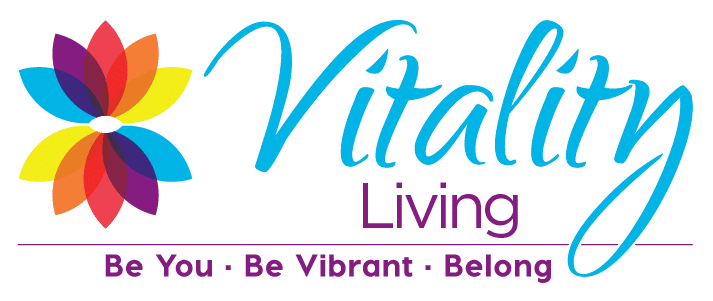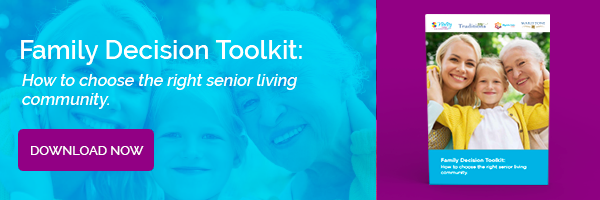How to Choose the Right Senior Living Community: A Family Decision Guide
If you’re here, you’re likely carrying a heavy mix of emotions—worry for your loved one’s well-being, stress over logistics and finances, maybe even guilt about no longer being able to provide the care they need at home. You’re not alone, and you’re not doing anything wrong.
Choosing a senior living community isn’t about giving up. It’s about finding the right support, peace of mind, and quality of life for both your loved one and your family. This guide from Vitality Living is here to help you take that next step with clarity, confidence, and compassion.
Where Do We Start?
When you’re just beginning, the process can feel overwhelming. There are many senior living options to consider, each with different levels of care, amenities, and costs. You may be asking:
- What type of care does my loved one need now, and possibly later?
- What’s the cost of senior living, and what’s included?
- How do I know which community is truly a good fit?
That’s why we created the Family Decision Toolkit—a free, easy-to-follow resource that walks you through every step of the decision-making process, with tools like a senior living checklist and worksheets to compare communities side by side.
Step 1: Understand the Different Types of Senior Living
Not all senior living communities are the same. Each is designed to support different needs and lifestyles:
- Independent Living / Active Adult: For those who want a maintenance-free, senior living lifestyle focused on connection, convenience, and freedom.
- Assisted Living: For older adults who require assistance with daily activities, such as bathing, dressing, or taking medication.
- Memory Care: For those living with dementia or Alzheimer’s, memory care provides 24/7 support in a safe, structured environment.
Start by assessing what your loved one needs today—and what they may need in the future. Don’t be afraid to ask questions. Good communities will want you to feel fully informed.
Step 2: Tour Thoughtfully and Trust Your Instincts
Once you’ve narrowed your list, schedule visits. During your tour, pay attention not just to the features, but to the feel of the place. Are the staff warm and attentive? Do residents seem engaged and well cared for? Can you picture your loved one living here?
Our senior living checklist in the toolkit includes a simple list of questions to ask and things to observe during each visit to help you compare.
Step 3: Ask About Costs—And What’s Included
We know the cost of senior living is one of the biggest concerns families face. Every community structures its pricing differently, so it’s important to understand exactly what your monthly fee covers, like meals, housekeeping, transportation, or care services.
Many families are surprised to learn that when you add up the costs of living at home – mortgage or rent, utilities, groceries, home maintenance, and personal care services – it’s not as different as they thought. And it comes with more support and less stress.
If you’re unsure what’s financially possible, ask! A good team will talk it through and connect you with any available resources.
Step 4: Involve Your Loved One (When Possible)
Change is hard at any age, and even harder when it means leaving home. If your loved one can participate in the decision, involve them as much as possible. Let them ask questions, tour communities, and express their feelings.
If they’re not able, trust your knowledge of who they are and what will help them feel safe and valued. Choosing a community that aligns with their personality and preferences will help make the transition smoother.
Step 5: Take a Breath—You’re Doing the Right Thing
This decision isn’t easy, but it comes from a place of deep love and concern. You’re not just finding a place to live, you’re creating space for a better, fuller life.
At Vitality, our senior living communities are built around just that: purpose, connection, and care. From active, independent lifestyles to personalized memory care, we’re here to help every resident thrive.
Ready to get started?
Download our Family Decision Toolkit to take the guesswork out of the process—or contact us directly. Our team will guide you at your pace, not ours.You’ve already taken the first step. We’ll help you take the next one.



